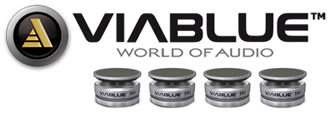New Customer?
Create your accountNo products
Prices are tax included
This new version of the R-8HE, the MK3 version, has received many technical improvements and has been extensively tested and measured to provide a sound reproduction of great musicality. The power supply is stabilized by a discrete servomotor, offering performances comparable to those of batteries and efficiently powering the digital/analog conversion sections. The analog circuits are always powered by pure Class A power supplies to ensure the best possible sound reproduction.
By buying this product you get 258 loyalty points
Audio-GD R-8HE MK3
Balanced Discrete 4x R2R DAC Regenerative Power Supply 32bit 384kHz DSD512 Black

This Audio-GD R-8HE, with its extremely careful design, takes up the key elements of its predecessor, the R-7HE, whose audio quality it inherits, while seeing its performance revised upwards and its price reduced. In the R-8HE, there are 4 Ladder DAC modules, this time in version 2, as well as the regenerative power supply. These two elements, at the heart of the device, allow it to offer great transparency, high dynamics and incredible sound richness, with a reproduction close to what can be offered by analog.
The R-8HE also includes surface components, making it possible to reduce the price of the device without degrading its audio quality, and therefore making it more accessible to buy a DAC with a regenerative power supply.
In addition, the R-8HE has completely separate power supplies. The digital circuit and the analog left and right channels each have a transformer. The signal circuit and transformers are separated by 5mm thick Aluminium plates, ensuring a high level of insulation. This improves SNR, isolates harmonic interference and reduces noise. The left and right channels are placed completely symmetrically so as to maintain the distance travelled by the cables equal on each side. The R2R DA conversion modules are placed between two Aluminium plates to avoid RF interference.
Version MK3
This new version of the R-8HE, the MK3 version, has received many technical improvements and has been extensively tested and measured to provide a sound reproduction of great musicality. The power supply is stabilized by a discrete servomotor, offering performances comparable to those of batteries and efficiently powering the digital/analog conversion sections. The analog circuits are always powered by pure Class A power supplies to ensure the best possible sound reproduction.
Improvements and new features of the MK3 version :
- [New feature] New chassis design making the product more modern.
- [new feature] A new display has been added to the R8 mk3. Input and sample rate are now displayed simultaneously. (Multifunction display with 2 lines).
- [New feature] Discrete components are used within a balanced power transmission design. This MK2 version embeds 4 groups of discrete and independent hardware DSD decoders and 8 groups of discrete R2R DAC modules forming a 2 channel balanced push-pull decoder.
- [New feature] An option - which can be activated or not - allows you to enjoy a sound signature close to the analog sound of vinyl.
- [New feature] Function to display the sampling rate of the input signal.
- [Upgrade] Both the USB and HDMI inputs have isolators and two sets of independent linear power supplies to prevent interference.
The USB uses a bidirectional isolator, not only transmitting the I2S signals to the FPGA but also receiving the FPGA's synchronous clock signal for greater accuracy in signal transmission. - [Upgrade] The digital circuitry of the entire DAC is composed of an FPGA and 5 CPLDs to separate the different functional circuits and avoid interference. The FPGA operates using the parallel data processing mode for clearer sound.
- [Upgrade] Two high-end Accusilicon clocks with frequencies of 90 and 98MHz ensure the synchronization of the whole device for a detailed and transparent playback.
- [Upgrade] DSD signals use the built-in asynchronous clock for better synchronization.
- [Upgrade] The SPDIF inputs support the playback of DoP streams.
- [Upgrade] All the parameters of the device can be changed using the buttons on the front of the device.
- [Upgrade] A port for updating the firmware has been added to the outside of the device.
Seamless components and connectivity
Like many Audio-GD products, the R-8HE includes an Amanero USB interface, supporting PCM resolutions up to 32bit 384kHz and up to DSD 512. The device has 5 inputs: Coaxial, Optical, HDMI I2S, USB and XLR. Each input has interfaces adapted to provide the highest sound quality. On the output side, the R-8HE offers XLR, RCA and ACSS.
R2R 4x DA-7 V2 Design
The R-8HE, like its big brother, is a DAC R2R, a design that has become popular thanks to its undeniable sound qualities, especially when integrated into high-end products. While there are several methods for designing a DAC R2R that impact both performance and design complexity, Audio-GD continues to choose the highest quality as usual.
The design chosen by the brand switches ultra-low tolerance resistors in parallel and an ultra-fast FPGA chip controls and corrects the Ladder R2R. This design corrects each bit to achieve incredible performance. In addition, with this parallel structure, a single clock cycle allows all data to be processed, where a series connection would require 8 to 24. Audio-GD also corrects imperfections in basic R2R assemblies, i. e. those caused by resistance tolerance, through the use of the integrated FPGA.
Main advantages of the DAC R2R Ladder discrete:
- The R2R does not convert the clock signal into the output signal.
- R2R is not sensitive to jitter, unlike Delta-Sigma.
- R2R provides a more accurate output signal than Delta-Sigma.
Regenerative Power Supply
The regenerative power supply is an electrical generator directly integrated into the device and avoids any noise from the main power supply and thus provides an ultra-low noise AC signal to power the device. It regenerates the main power supply and blocks the noise of the electrical signal to obtain the most neutral sound.
First, a transformer converts the main voltage. The DC conversion is carried out by Class A power supplies. A discrete symmetrical regenerative wave generator produces an ultra-low distortion wave at 50Hz.
Symmetrical amplifiers, with powerful output stages, drive regenerative transformers to produce extremely clean alternating current. This totally clean signal is then routed to separate Class A power supplies for the left and right channels.
The Class A DC power supply with an input impedance will avoid any noise and allow the amplification stages to have a low output impedance.
In addition, the 4 R-Core transformers provide 225W of power to the system and Nover capacitors with a capacity of more than 60000µF are used to ensure a fluid current.
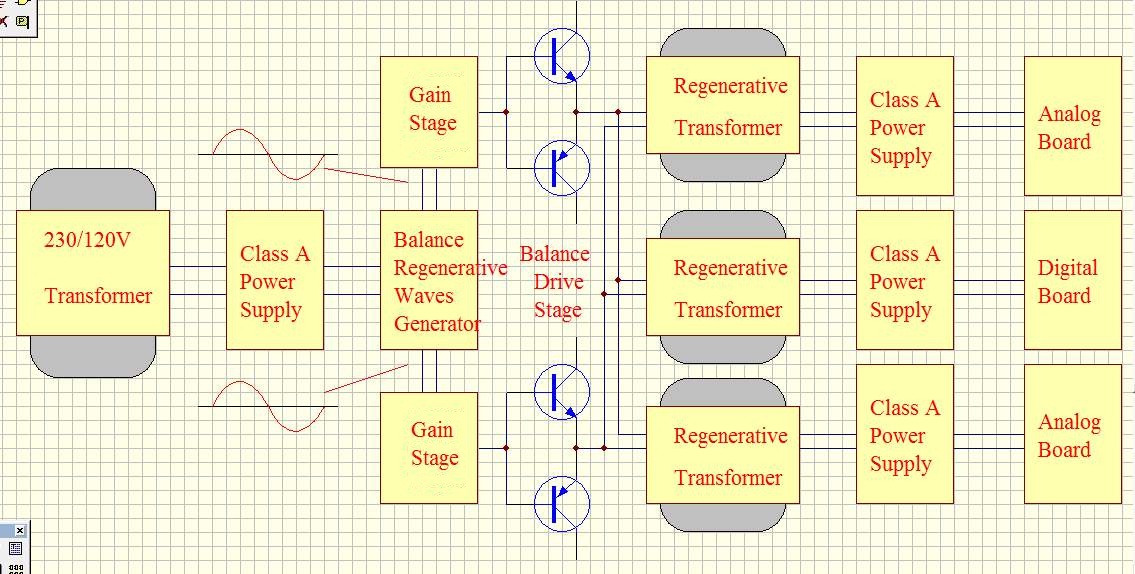
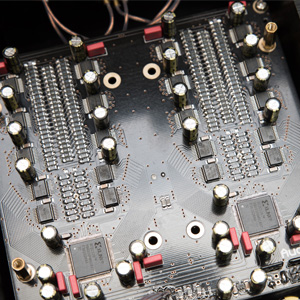
Ultra fast signal processing
An FPGA chip is a programmable component that is now regularly found in high-end DACs. It allows total control of the internal hardware via a complex software layer. A huge advantage of using an FPGA is that its software layer can be easily updated to add new features or improve the overall performance of the device. This allows the device to be upgraded without necessarily having to replace components. It is both a high-performance and flexible solution.
In R-8HE, in this case, the FPGA is responsible for :
- Excellent performance of the SPDIF interface, replacing less efficient traditional interfaces such as DIR9001, WM8805 or AK411X chips.
- Total re-clocking process with FIFO design applicable to all inputs. In this way, the output data is always fully synchronized with the clock signal, thus limiting jitter.
- The integration of 2X, 4X and 8X oversampling filters, digital filters and 4 different NOS modes.
Discrete symmetrical analog output stage
After the digital-to-analog conversion by the dedicated R2R modules, the analog signal is transported to the discrete symmetrical stages using paired discrete transistors. The analog sections have no surface components, only discrete components. The output buffers are asymmetric FETs. Two parallel stages provide very low impedance and all output stages have a pure Class A design so that there is no non-feedback. From a sound point of view, this translates into an absolutely disconcerting neutrality. Four AOPs work like a DC Servo, so that no coupling capacitors are required and the DC output is automatically polarized. The output stage also has ACSS outputs for even greater detail and definition. Finally, the circuit does not integrate any relays or switches after the digital/analog conversion modules, in order to maintain the purest possible reproduction.
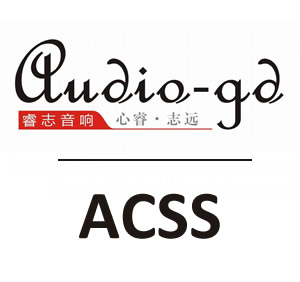
ACSS
Audio-GD has its own technological signature, called ACSS for Audio-GD Current System Signal. Thanks to the firm's expertise and know-how, this technology offers a less colourful, more detailed sound, and an unparalleled neutrality. Each of the brand's technical engineers is, in addition to being experienced, a Hi-Fi and audio enthusiast like you and us.
Easy to use
As with all its latest products, and unlike previous generations, the adjustment of filters and modes is done simply by using the buttons and the screen on the front of the device, where it used to be necessary to open it. In the same perspective of simplifying the use of the R-8HE, Audio-GD integrates a Micro USB port on the back of the device allowing easy firmware updates.
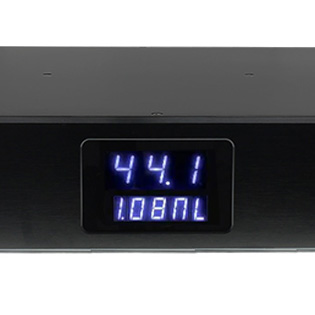
Oversampling & NOS Filters
| Oversampling Filters | |
|---|---|
| Mode 0 | Mode NOS |
| Mode 2 | 2x Oversampling |
| Mode 3 | 4x Oversampling |
| Mode 4 | 8x Oversampling |
| NOS Filters | |
|---|---|
| Mode 1 | Easiest data processing |
| Mode 2 | FIFO data |
| Mode 3 | Fastest data processing |
Technical characteristics
| Specifications | |
|---|---|
| Product type | R2R DAC |
| Inputs | 1x USB-B 1x I2S LVDS HDMI 1x Optical 1x Coaxial |
| Outputs | 1x XLR 1x RCA 1x ACSS |
| SNR | > 120dB |
| Output impedance | < 5Ω (XLR, RCA) |
| Output level | RCA : 2.5V XLR : 5V ACSS : 2+2MA |
| Réponse en fréquence | 20Hz-20kHz |
| THD | < 0.01% |
| Input sensitivity | Coaxial, 75Ω : 0.5Vp-p Optical: 19dBm HDMI : 3.3V |
| Supported OS | Windows, OSX, Linux, ISO |
| Supported sampling rate | USB / I2S : PCM up to 32bit 384kHz, Native DSD up to DSD512 Coaxial : PCM up to 24bit 192kHz Optical : PCM up to 24bit 96kHz |
| General | |
|---|---|
| Supply voltage | 220-240VAC 50/60Hz |
| Consumption | 48W |
| Weight | Approx. 12kg |
| Dimensions (LxPxH) | 430*445*80mm |
| Case material | Aluminium |
| Package | 1x Audio-GD R-8HE MK3 1x Power cable 1x USB Cable |
| Input | USB |
| Input | SPDIF |
| Input | I2S via HDMI |
| Input | XLR |
| Input | Optical |
| Input | BNC |
| Output | RCA |
| Output | ACSS |
| Output | XLR |
| DAC / ADC Chip | R2R LADDER DAC |
| Max sampling rate | 384kHz |
| Max sampling rate | DSD512 |
| Color | Black |
| Networking | No |
| Remote Control | No |
No reviews at this time.


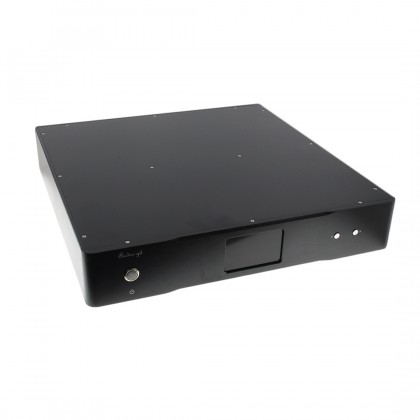









![[GRADE B] AUDIOPHONICS DAW-S250NC Class D Integrated Amplifier NCore NC252MP DAC ES9038Q2M WiFi Bluetooth 2x250W 4 Ohm](https://www.audiophonics.fr/61971-thumb_default/audiophonics-daw-s250nc-class-d-integrated-amplifier-ncore-nc252mp-dac-es9038q2m-wifi-bluetooth-2x250w-4-ohm-32bit-768khz-dsd.jpg)




















